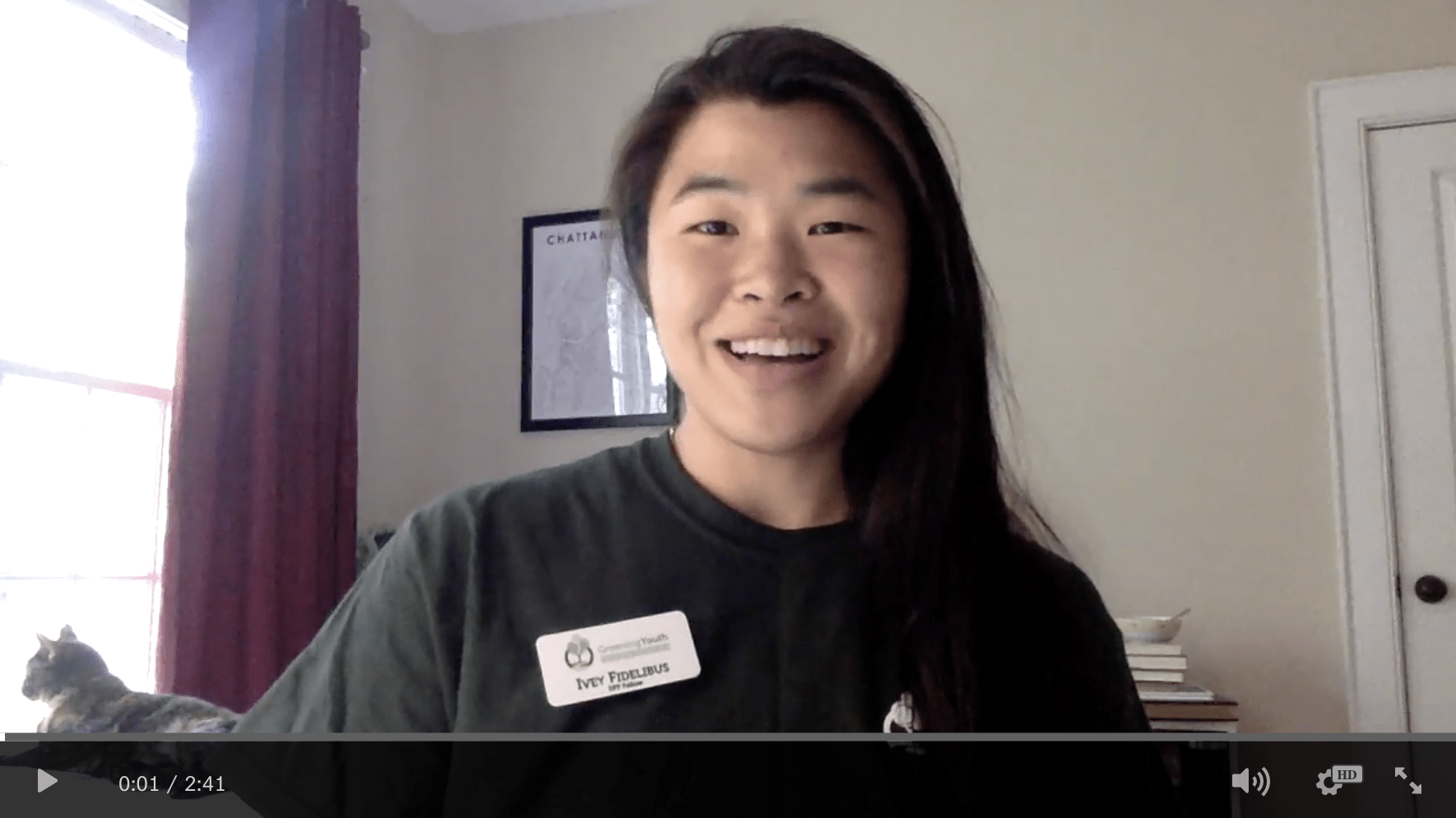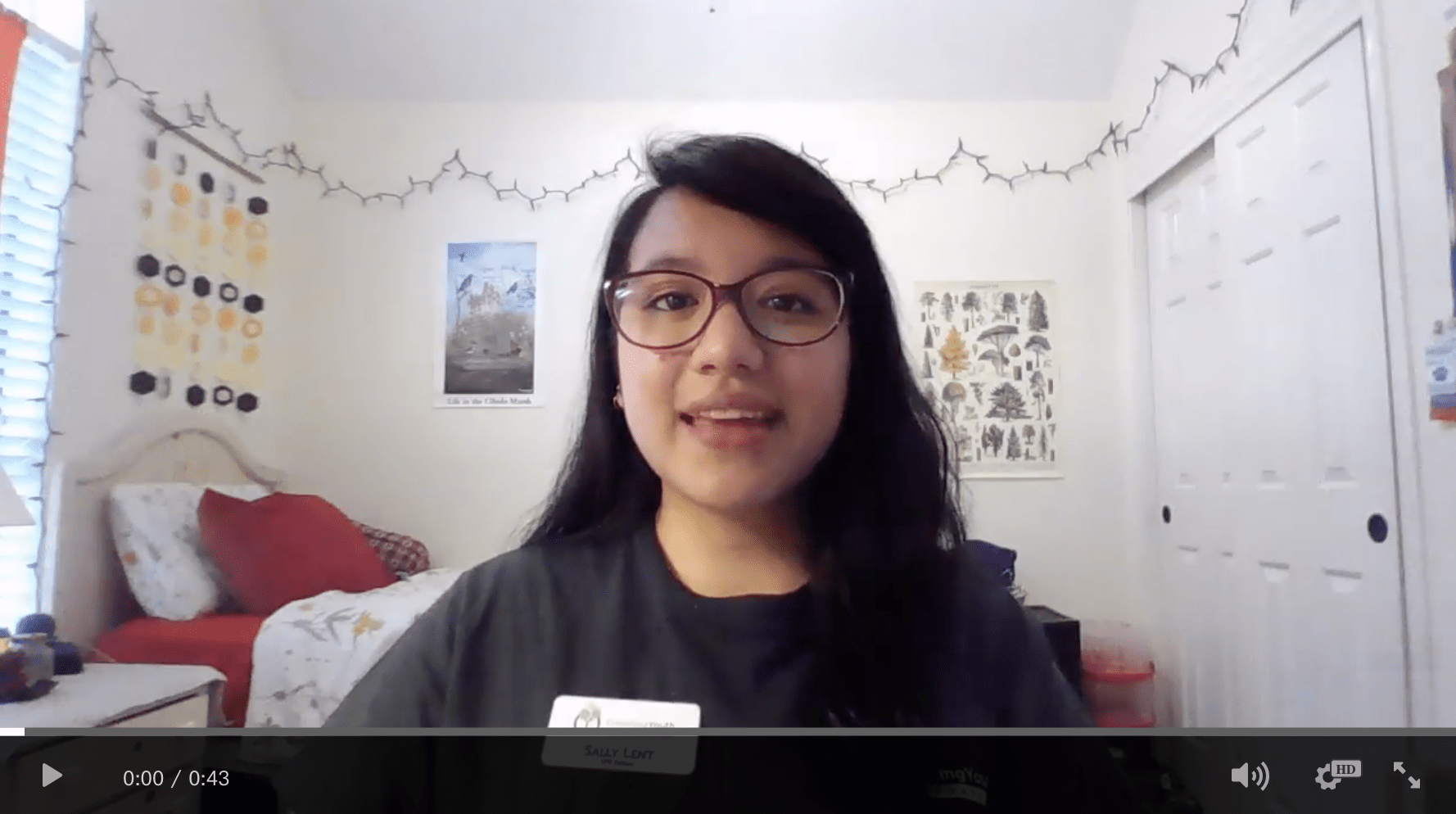Through The Corps Network’s National Cooperative Agreement with the U.S. Fish and Wildlife Service (USFWS), several Corps have adapted to COVID-19, finding safe ways to complete important projects in partnership with USFWS.
This story features Corps using The Corps Network’s National Cooperative Agreement with the U.S. Fish and Wildlife Service. Learn more about how this agreement provides Accredited Corps across the country the opportunity to partner with the U.S. Fish and Wildlife Service to engage young people in maintaining some of our country’s most treasured natural and cultural resources.
Fellowship Life in 2020
From May to August of 2020, Greening Youth Foundation (GYF) used The Corps Network’s agreement to engage 23 young adults in the USFWS Directorate Fellows Program.
Though these fellows would typically serve in-person at a national wildlife refuge or other USFWS site, COVID-19 safety precautions meant that all 23 fellows served virtually. Working from home, the 2020 fellows supported the USFWS headquarters and refuges across thirteen states: Alabama, Colorado, Florida, Georgia, Louisiana, Nebraska, North Carolina, Mississippi, Montana, South Carolina, Utah, Virginia, and Wyoming.
Click to Watch: DFP intern Ivey Fidelibus discusses her work assisting the U.S. Fish and Wildlife Service International Affairs Program research the intersection between the wildlife trade and disease.
Click to Watch: DFP intern Sally Lent discusses her work assisting the Wyoming Ecological Services Field Office with research about the impact of land-use changes on the western bumblebee.
The Directorate Fellows program is designed to give an immersive training experience to undergraduate or graduate students pursuing degrees in biological sciences or natural resources management. The 2020 fellows through GYF supported a range of USFWS priorities. Examples of some of their projects and responsibilities include:
- Fisheries: supporting freshwater mussel recovery in the Apalachicola-Chattahoochee-Flint River Basin.
- Surveying/Monitoring/Assessments and Tracking: conducting forest vegetation surveying and monitoring; mapping conservation easements for the Savannah Coastal Refuges Complex.
- Research: collecting and summarizing data to help monitor the western bumble bee.
- Database Management/GIS: organizing refuge GIS; conducting species status assessments (SSA).
- Invasive Species: combatting invasive grasses and mapping invasive plants.
To ensure fellows felt engaged and had a meaningful experience, despite serving from home, GYF held weekly check-ins with all of the fellows. Each fellow was also required to submit video journals to GYF to help track their progress. All fellows who successfully completed the program are eligible to receive Direct Hire Authority, which gives them a significant advantage when applying to federal jobs.
Crew Work on the Coast
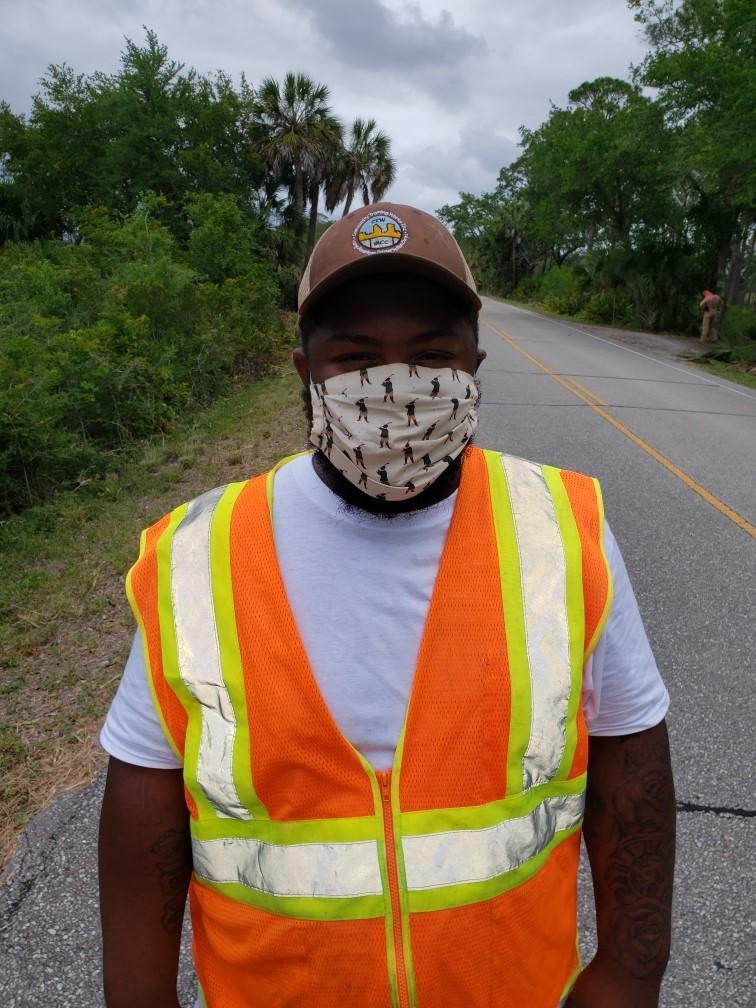
A Corpsmember with Community Training Works
In addition to work accomplished through the Directorate Fellows Program, Corps also completed crew-based work. Community Training Works (CTW) used The Corps Network’s Cooperative Agreement to partner with St. Marks National Wildlife Refuge, located on the Florida Gulf coast. Some of the young adults on the crew were AmeriCorps members through The Corps Network’s Transportation and Infrastructure Program (TIP).
Corpsmembers served from March through July, implementing new COVID-19 safety protocols to help ensure the crew would not need to stop due to illness. Among other activities, projects included levee restoration, habitat restoration, fence installation, rock work, trail maintenance, fire mitigation, tree removal, and native planting. The Corps will continue work at the refuge in 2021, primarily focusing on fire mitigation and trail maintenance.
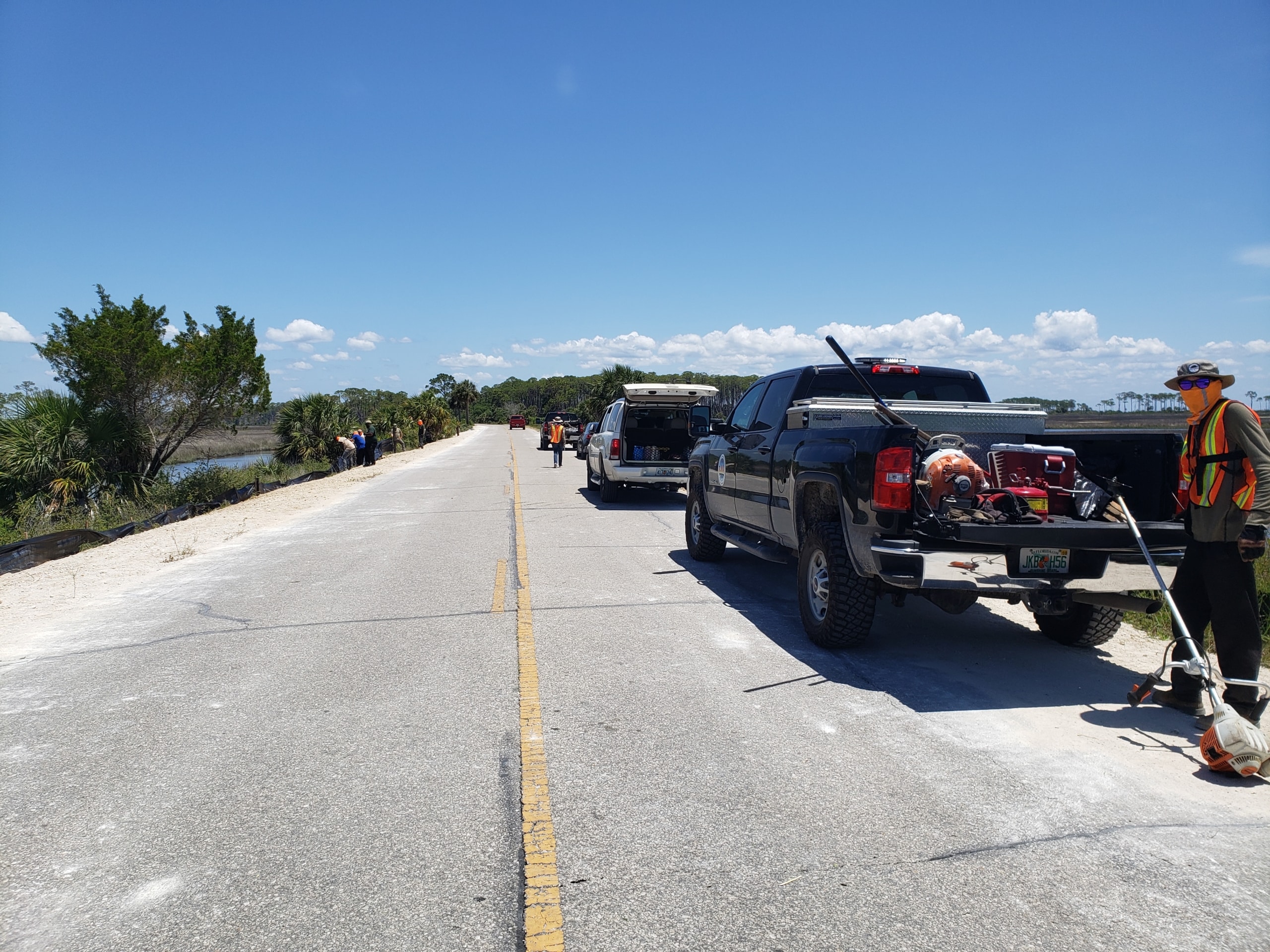
Looking to the FY21 Season
Under The Corps Network’s Cooperative Agreement, Corps are already preparing for work with USFWS in 2021. The Intergovernmental Internship Cooperative (IIC) will help recruit four Directorate Fellows to support refuges in the Southwest. Due to mandatory quarantine rules at the refuges, the positions will be a hybrid of virtual and in-person work until it is safe for the fellows to begin serving fully on-site.
Locations and activities for the fellows include:
- Rio Mora and Las Vegas National Wildlife Refuges (New Mexico): developing in-school programming related to all three refuges within the Northern New Mexico Complex; updating and managing the refuge website and social media; working on the Loma Parda Trail; monitoring and tracking birds, plants, and other species.
- Buenos Aires and Cabeza Prieta National Wildlife Refuges (Arizona): creating and posting social media content; conducting virtual environmental education; volunteer management; visitor center support.
- Balcones Canyonlands National Wildlife Refuge (Texas): conducting virtual environmental education; creating website and social media content; event planning and outreach.
- Sequoyah NWR and Wichita Mountains National Wildlife Refuge (Oklahoma): creating website and social media content; developing virtual programs for educators within the state; supporting the Oklahoma State Junior Duck Stamp program through virtual programming.
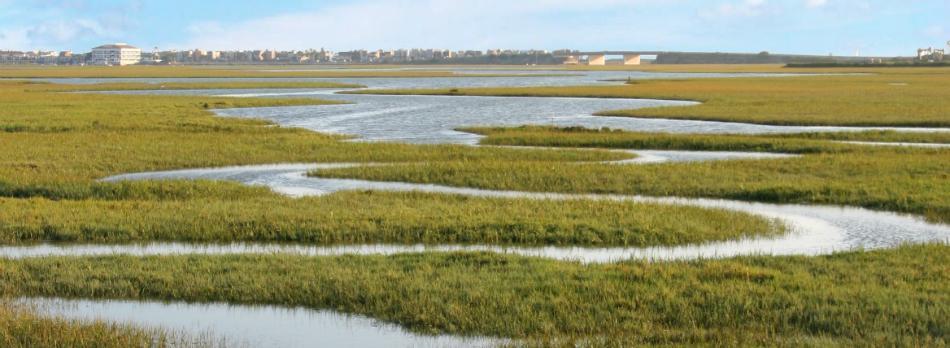
Seal Beach National Wildlife Refuge
Crews will also assist USFWS in 2021. Conservation Corps of Long Beach will work under The Corps Network’s Cooperative Agreement to support projects at Seal Beach National Wildlife Refuge, which is located within Naval Weapons Station Seal Beach. Corpsmembers and Corps staff will receive clearance to enter the Navy base.
Projects will include habitat restoration, trail maintenance, litter abatement, event support, assessments of invasive and native species, and addressing backlogged maintenance work from a past government shutdown and COVID-19 closures. Most of the work needs are on Hog Island, a habitat-sensitive area in the middle of the refuge.
Getting Creative
We are impressed by the amount of work Corpsemembers and fellows have accomplished this year to support the USFWS mission. Facing uncertainty, Corps and USFWS staff collaborated to develop safety protocols and new work plans. We are inspired by these partnerships and look forward to seeing what Corps will accomplish in 2021.


